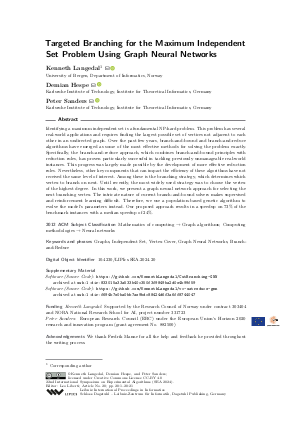LIPIcs.SEA.2024.20.pdf
- Filesize: 1.03 MB
- 21 pages

 Creative Commons Attribution 4.0 International license
Creative Commons Attribution 4.0 International license






























Feedback for Dagstuhl Publishing